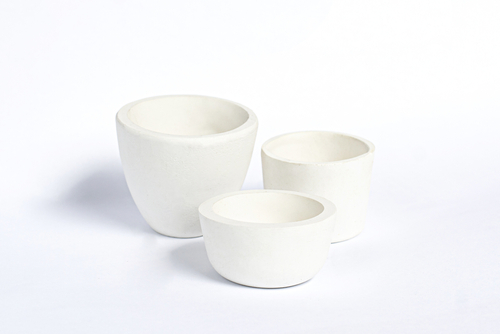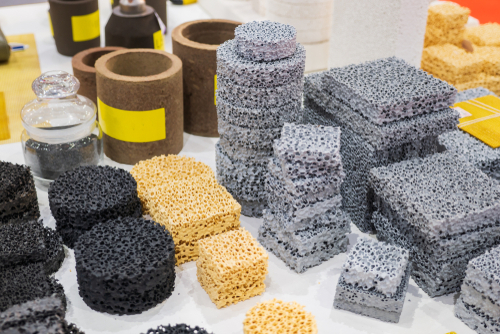Alumina, or aluminum oxide, is one of the most widely used types of oxide ceramic materials. It boasts suitability for varied specialized applications due to its favorable set of properties. It’s the material of choice for cutting tools, abrasion-resistant tiles, spark plugs, and other parts.
However, there is not just a single type of alumina ceramics that’s the perfect choice for all of its applications. Alumina injection molding companies work with a wide selection of different grades of alumina ceramics to give their clients the part they require with the characteristics they need, which is why it’s important to know what those grades are.
What are the different grades of alumina ceramics?

Smelter grade
Metallurgical or smelter grade alumina is the type of alumina used for manufacturing aluminum metal. It’s made from aluminum hydroxide in either fluid flash calciners or in fluid beds. The fluid flash process first removes free water and chemically combined water from alumina before gradually decreasing its surface.
From there, alumina undergoes extremely high temperatures and calcination to transform into the α-form typically of the order of 25% with the specific surface area of >50m2/g.
Low soda
Many specialized applications for parts and components that are made from alumina, mainly in the electronic and electrical industries, require the presence of low soda levels in aluminum oxide. The low soda generally refers to the content of soda which is <0.1% of the entire weight of the component. It’s possible to achieve this with several different processes, such as boron and chlorine addition, acid washing, and others.
Reactive
The term “reactive alumina” refers to the type of technical ceramics that features a relatively high degree of purity and small sizes of crystals, typically <1μm which then sinters to a completely dense body at lower temperatures when compared to ordinary-soda, medium-soda, and low-soda alumina. This type of aluminum oxide is a good choice in applications that require high chemical inertness, temperature resistance, wear resistance, and strength.
Tabular
This is a sintered or recrystallized α-alumina with a morphology that consists of large and flat-shaped corundum crystals with the size of 50-500μm. It originates through the processes of pressing, extruding, or pelletizing calcined alumina into different shapes before heating them to temperatures below its melting point in shaft kilns, approximately to 1800℃.
After the process of calcination, sintered alumina spheres are suitable for different purposes, such as for use in catalyst beds, or you can grind, screen, and crush them to different sizes according to your requirements.
Fused
This type of alumina originates in electric arc furnaces as a current passes between different vertical carbon electrodes. The generated heat then melts the aluminum oxide, creating a material with high refractoriness, low permeability, low porosity, and high density, suitable for use in refractories and abrasives.
High purity
Finally, high-purity alumina refers to the material which has a purity of 99.99% and higher. Professionals can make it starting from Bayer hydrate and through successive washings and activations, or with chloride until they reach the required purity. Highest-purity aluminas are made either from aluminum metal or by calcining ammonium aluminum sulfate.
Who’s the most reputable advanced technical ceramics manufacturer I should hire?

Finally, and most importantly, carefully choose the partner to outsource your alumina injection molding to. Luckily, you can always rely on Wunder Mold, one of the leading manufacturers of a wide selection of precise and intricate alumina parts and components. We use cutting-edge materials and tools to bring your design to life per your exact requirements. Give us a call or send an email at sales@wundermold.com.